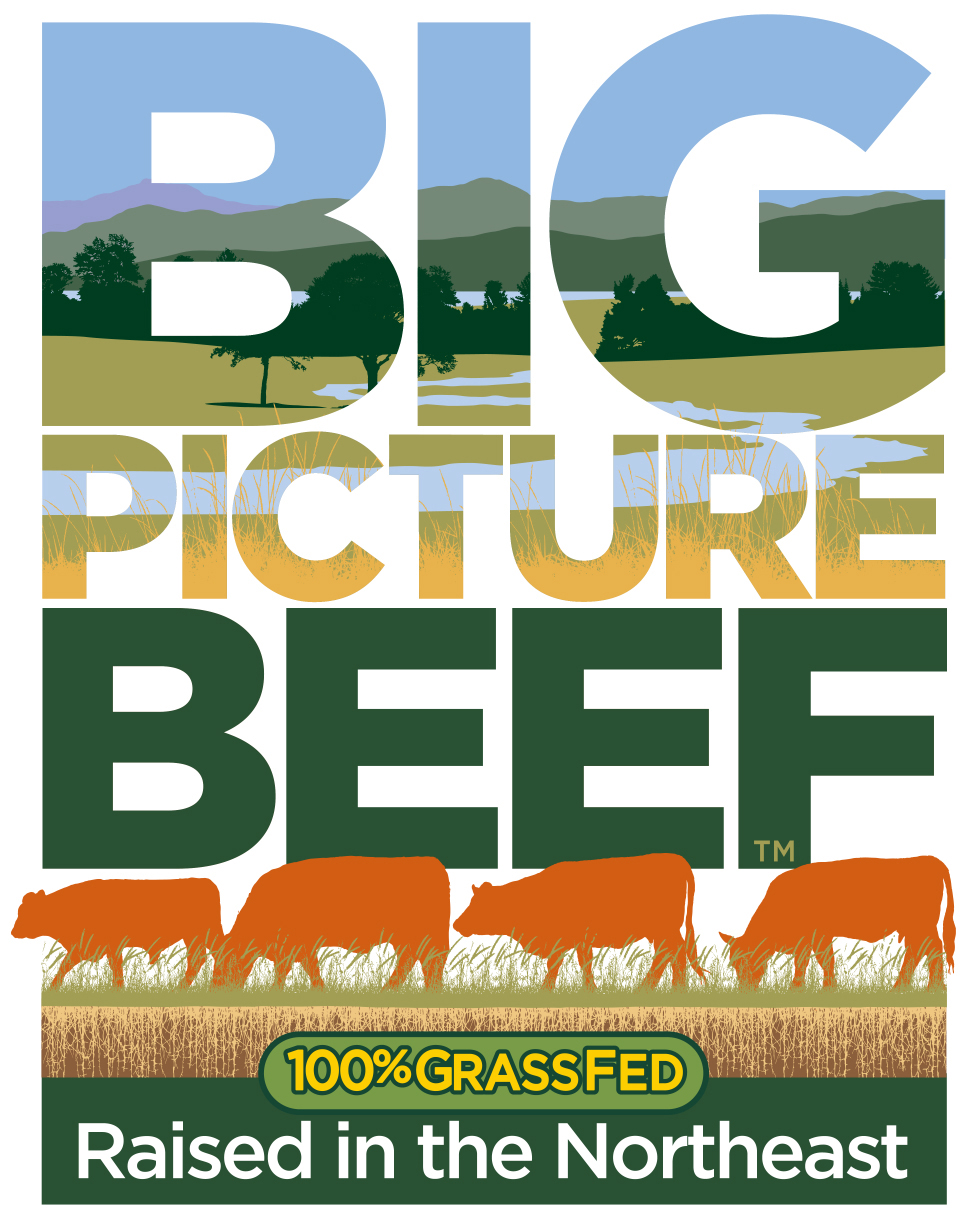Beyond sustainable: beef in a new agricultural model
By Ridge Shinn and Lynne Pledger
This op-ed first appeared in the Greenfield Recorder, 9/12/2016 as “My Turn/ Shinn and Pledger: the secret of CO2 repair.”
Raise your hand if you believe that beef production is bad for the environment.
OK, lots of hands are up – but not everyone’s. While corn-fed, feedlot beef production does squander water and contribute to climate change, a growing number of environmentalists recognize that raising 100% grass-fed beef – with no grain ever – provides surprising and significant benefits for our beleaguered planet.
How can this be true? First, to clarify, all beef cattle start their lives on pasture but eventually most are sent to feedlots for fattening on corn. In New England, most beef cattle are trucked to feedlots out West; others are fed corn on the home farm. But 100% grass-fed cattle graze on pasture for their entire lives, with no corn, no feedlots, and none of the negative environmental impacts of the industrial model.
And there’s more. The recommended practices for fattening cattle on pasture (without grain) actually revitalize soil and address two pressing threats to human life: climate change and drought.
Regarding climate change, let’s acknowledge that cutting greenhouse gas emissions, even dramatically, is not enough to curtail global warming; we must also get carbon that is already in the air sequestered in the ground where it cannot escape.
For this task the most effective climate change activists are the smallest: the Glomales fungi, which are found on plant roots. When plants pull carbon from the air and send it down to the roots (photosynthesis), the fungi exchange some of the carbon for mineral nutrients needed for optimum plant growth. Then they lock this carbon deep beneath the soil surface as stable humus. The fungi do this by making a waxy material called glomalin, which stores 27% of the world’s soil carbon according to the U.S. Department of Agriculture.
If you’ve never heard of glomalin, you’re not alone; this key to soil health wasn’t even identified until 1996. But now scientists recognize glomalin as an important low-tech strategy for sequestering carbon, and studies have been done to determine the best way to increase glomalin in farmland.
So what is the best way? A 2013 study of three cropland scenarios and three grazing scenarios found the highest concentration of glomalin in native grassland pastures managed by rotational grazing, an essential practice for fattening grass-fed beef. This method allows grazed land to rest and regrow tall grass before the cattle graze it again.
While soil chemistry is complex, rotational grazing goals for soil health are simple: (1) establish deep-rooted perennial grasses, and (2) manage pasture to foster abundant microbial soil life, including the Glomales fungi and associated bacteria. This reflects the way that buffalo helped build the topsoil of the Great Plains; the animals continuously moved to a new bite of grass, leaving behind a subterranean army of microbes creating glomalin that stored carbon. By the time the buffalo circled back to the area, lush, deep-rooted grass had regrown, and the cycle continued.
Glomalin also increases the land’s capacity to absorb and store water. In the western US, rain runs off vast acreages that lack the carbon “sponge” necessary for water to infiltrate soil and remain to protect against drought and erosion. A USDA National Resource Conservation Service study demonstrated the dramatic difference in land managed by rotational grazing as opposed to cropland or pasture managed by conventional grazing. A filmed experiment on three fields shows a given amount of water taking 31 minutes to infiltrate cropland soil, 7 minutes to infiltrate conventionally grazed pasture, and 10 seconds to infiltrate soil managed by rotational grazing.
Consumers are already demanding grass-fed beef for health reasons. In the next ten years it is predicted to comprise 30 to 40% of the total beef market. But for the most part, the grass-fed beef found in the meat case is imported from overseas. We must produce 100% grass-fed beef here in the Northeast to realize multiple environmental benefits for our region and beyond.
Some people choose a vegetarian diet. Fair enough. But it is important for everyone, regardless of dietary choices, to understand the differences between conventional and grass-fed beef production methods. To lump them together jeopardizes the success of an urgently needed, regenerative method for producing protein for humans and sequestering carbon. Because this approach dramatically increases soil productivity and is based on energy from the sun – not fossil fuel – this model offers hope for feeding world populations.
Producing 100% grass-fed beef utilizes natural systems that pre-date agriculture – and human folly.
